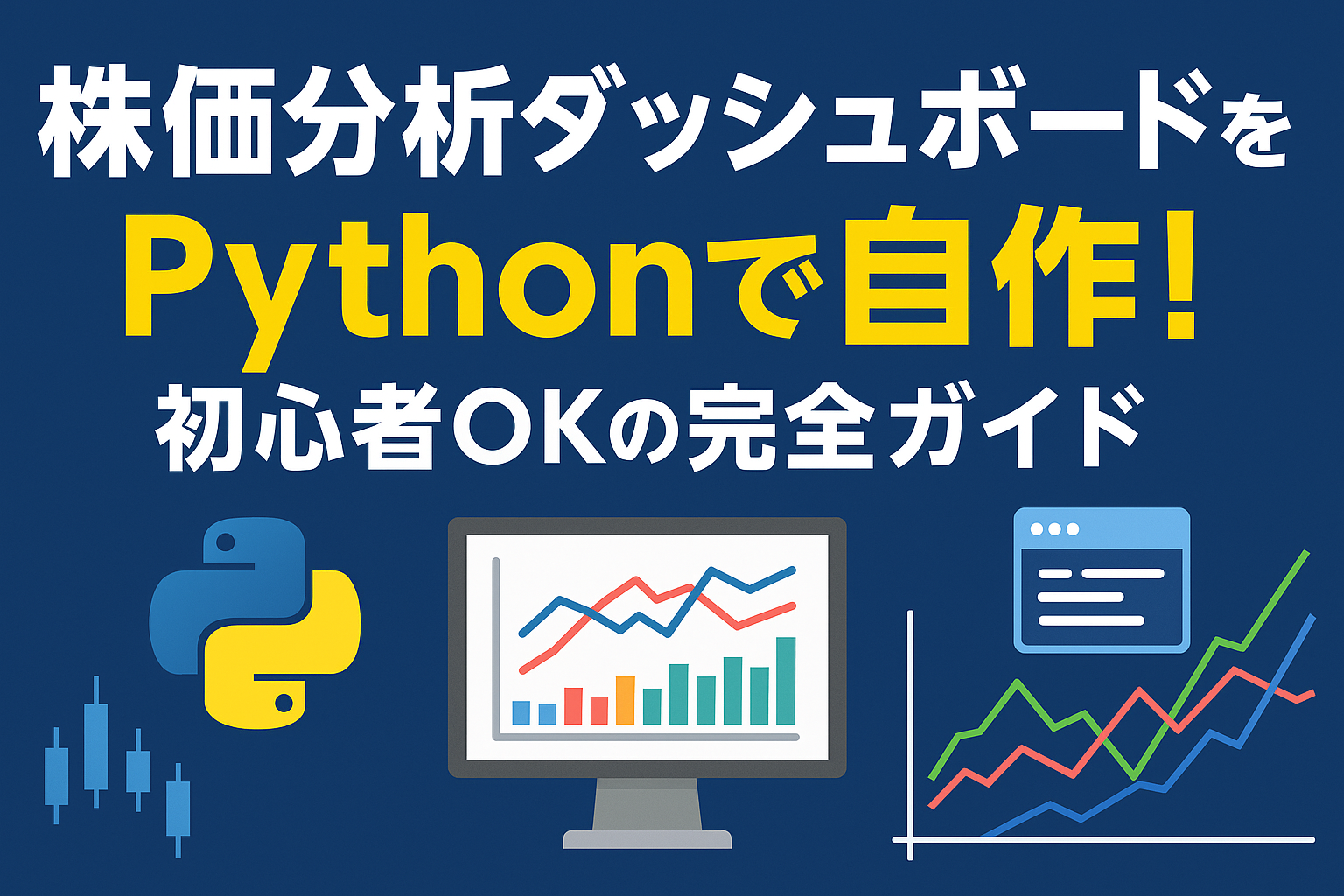Want to analyze stock price fluctuations in real time? But have you ever found securities websites and apps to be "difficult to use" or "not displaying the information you want"?
The solution to such problems isYour own stock analysis dashboardis.
With Python, Dash, and Plotly,Freely customizable visualization toolsYou can easily make it.
In this article, we will explain how to do this so that even beginners can understand.How to create a stock analysis dashboard that anyone can useWe will explain:
What is a stock analysis dashboard?
conclusion
A stock price analysis dashboard is a homemade analysis tool that allows you to visually check stock price movements.is.
Commentary
Stock price analysis is generally carried out using tools and apps provided by securities companies, but these can sometimes have limited functionality and little customizability.
What is attracting attention is the use of PythonOriginal stock price visualization toolis.
By using Dash and Plotly, you can do the following:
• Display the stock price of any stock in a graph
• Display of moving averages and trading volume
• Specify a date to narrow down the period
• Check data in table format
Fully customizableis the biggest advantage.
Libraries used and environment setup
conclusion
Build web-based dashboards with Dash and Plotly.
Commentary
For stock analysis we use the following libraries:
• yfinance: Gets stock price data from Yahoo! Finance
• pandas: Data processing and calculation
• Dash: Building interactive web applications
• Plotly: Draw beautiful graphs
Installation command:
1 | |
Dash is a web server.Python is required locally.is.
It also works with VSCode and Jupyter Notebook.
How to get stock data
conclusion
By using the yfinance library, you can easily obtain stock price data for a specified date.
Commentary
The following code can be used to obtain stock price data for any stock (in this case, Toyota Motor Corporation).
1 | = ) |
Available information:
• Open, close, high, low
• Volume (trading volume)
• Data frame by date
Free and no API key requiredSo, anyone can use it easily.
How to visualize with Dash and Plotly
conclusion
You can visualize your data by simply creating a web app with Dash and drawing graphs with Plotly.
Commentary
Here is the code to draw a simple stock graph:
1 | = = ===={ ====) ], : { : } } ) ]) == =) |
How graphs can be viewed in a browserIt is also intuitive to operate.
Adding interactivity
conclusion
By adding user-selectable features, the tool will evolve into an even easier to use tool.
Commentary
Using Dash's Dropdown and DatePicker you can do the following:
• Stock selection
• Change the display period
• Switching graph types (line, candlestick, etc.)
Example code:
1 | ==[ {: , : }, {: , : =) |
Interactive features have low learning costs and high benefits.
Regarding stock price data from public institutions
conclusion
If you are dealing with accurate stock price data, data from the Financial Services Agency and the Japan Exchange Group are also useful references.
Commentary
Reliable data sources include:
• Japan Exchange Group (JPX): https://www.jpx.co.jp
• Financial Services Agency Statistics: https://www.fsa.go.jp/statistics/
This data can also be used for analysis and validation.
Improve accuracy by matching with yfinance dataAnd it will be more reliable.
Overall view of the finished code
Here is the completed code for the entire dashboard:
1 | |
summary
In this article, we explained how to create a "stock price analysis dashboard" using Python.
Using Dash and Plotly, even beginners can easily create visualization tools.
Key points in this article:
• Stock price data is easily available on yfinance
• Create a web app with Dash and display graphs with Plotly
• Allows user input and interaction.
• You can run the completed code as is
Through your own dashboard,An opportunity to learn the power of data analysis in practiceI would appreciate it if you could do so.


